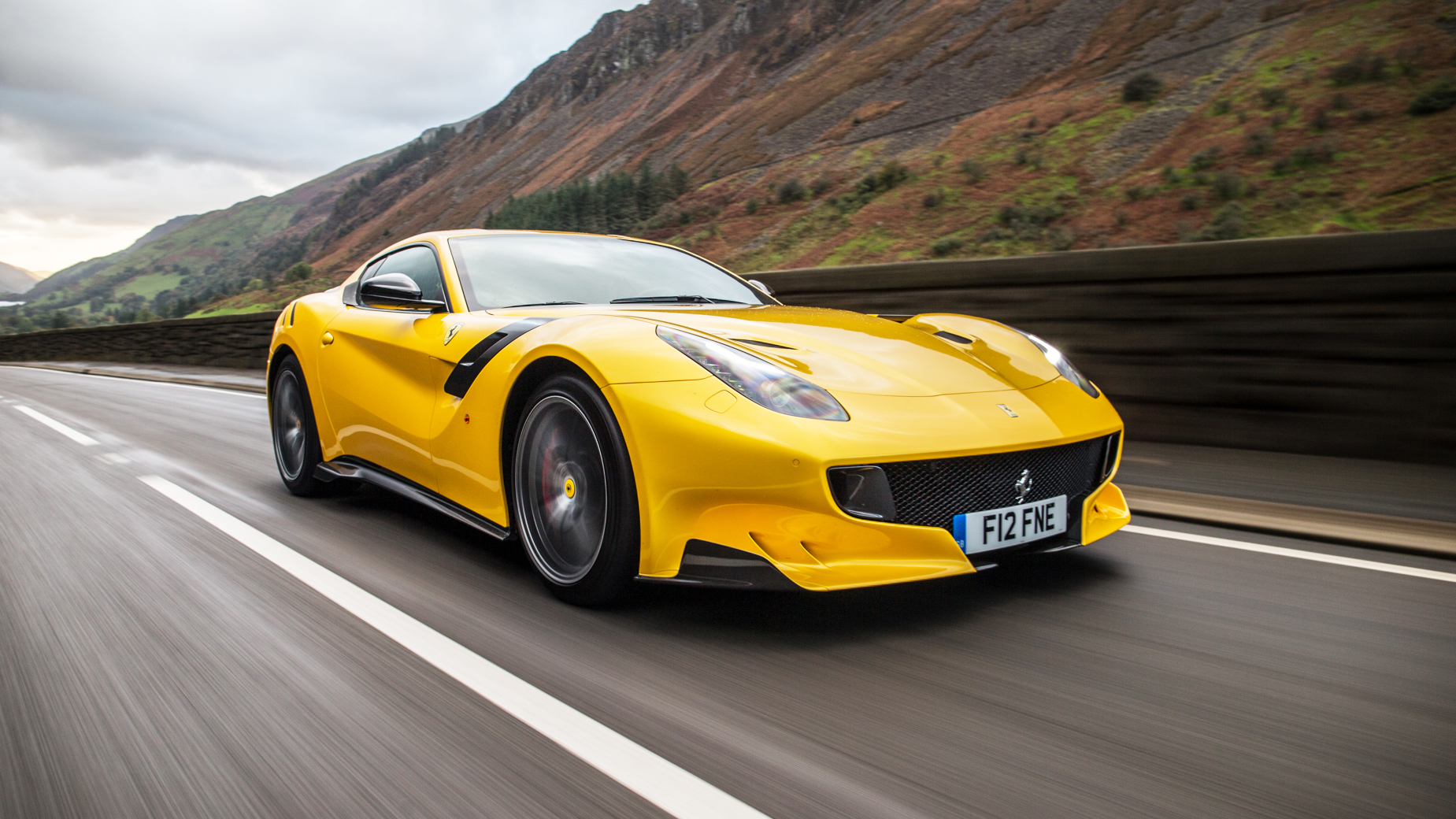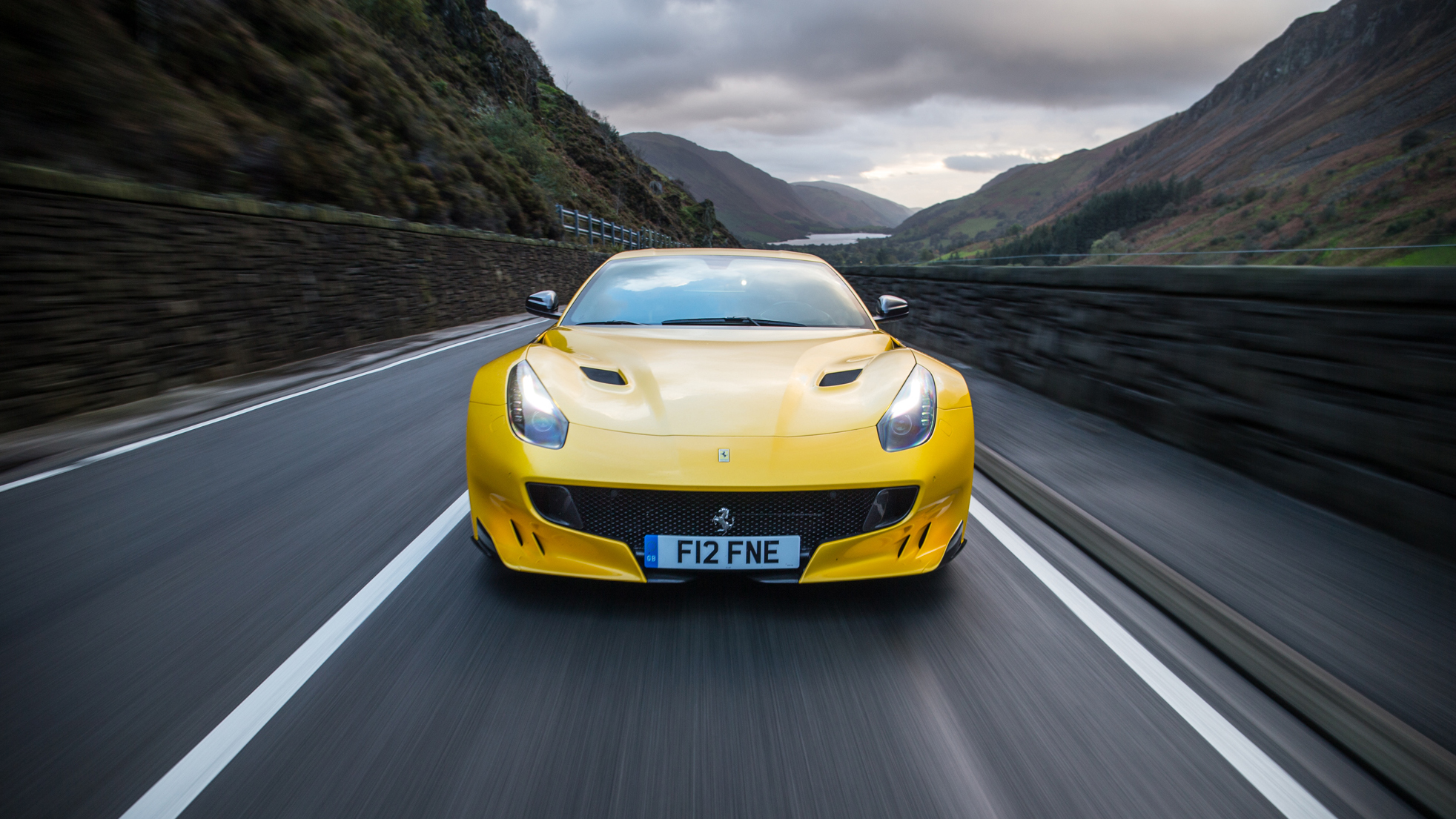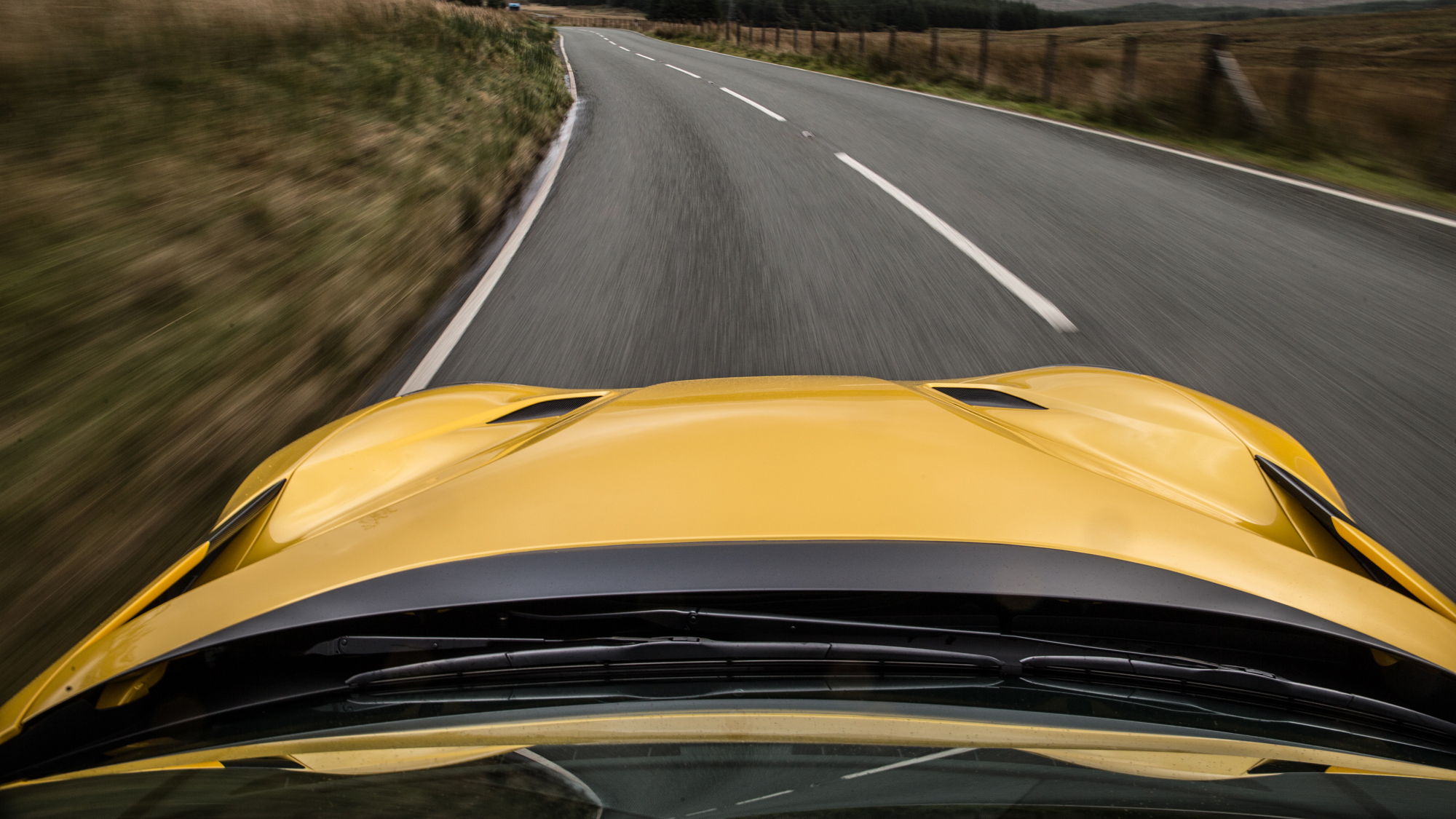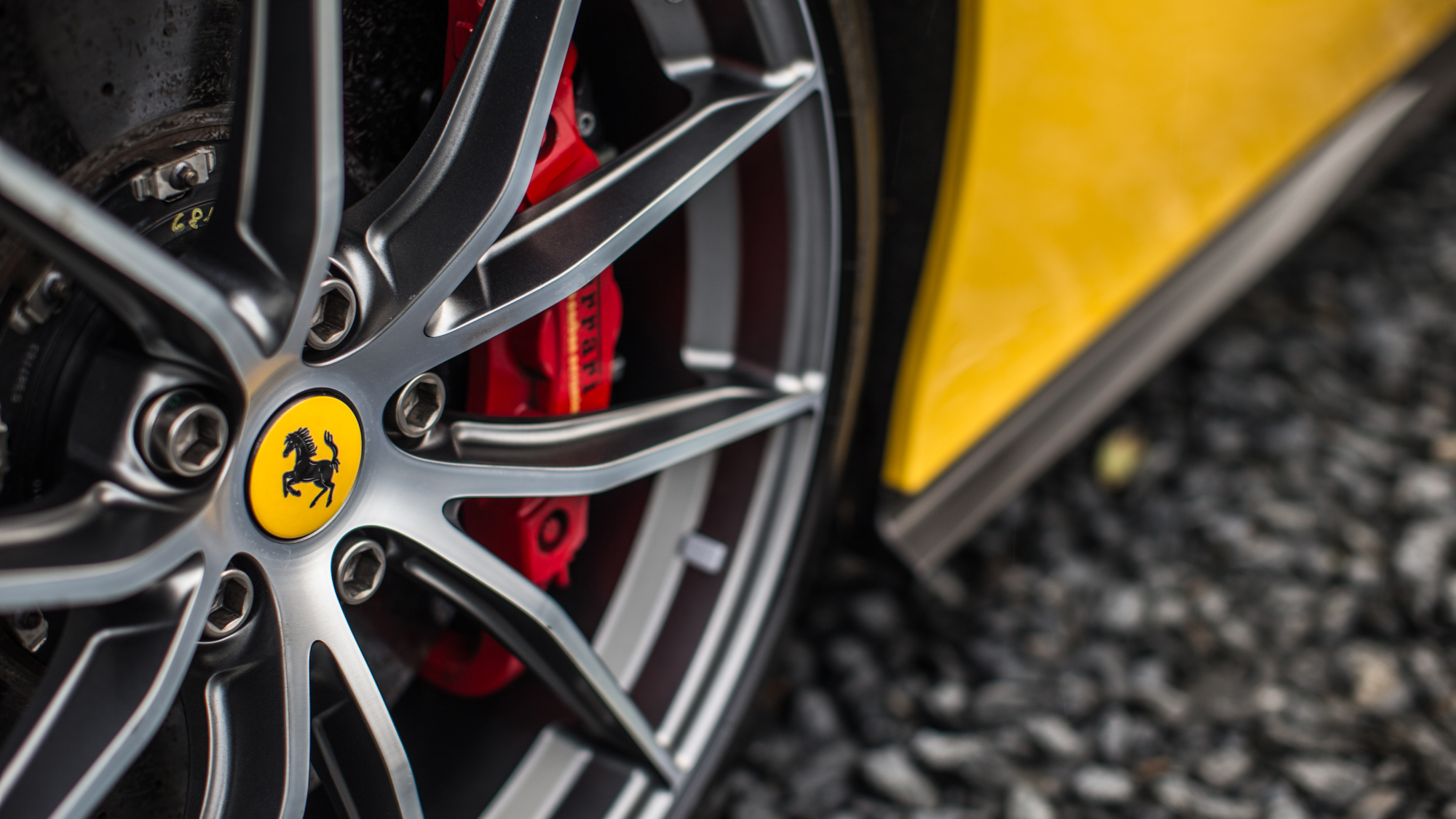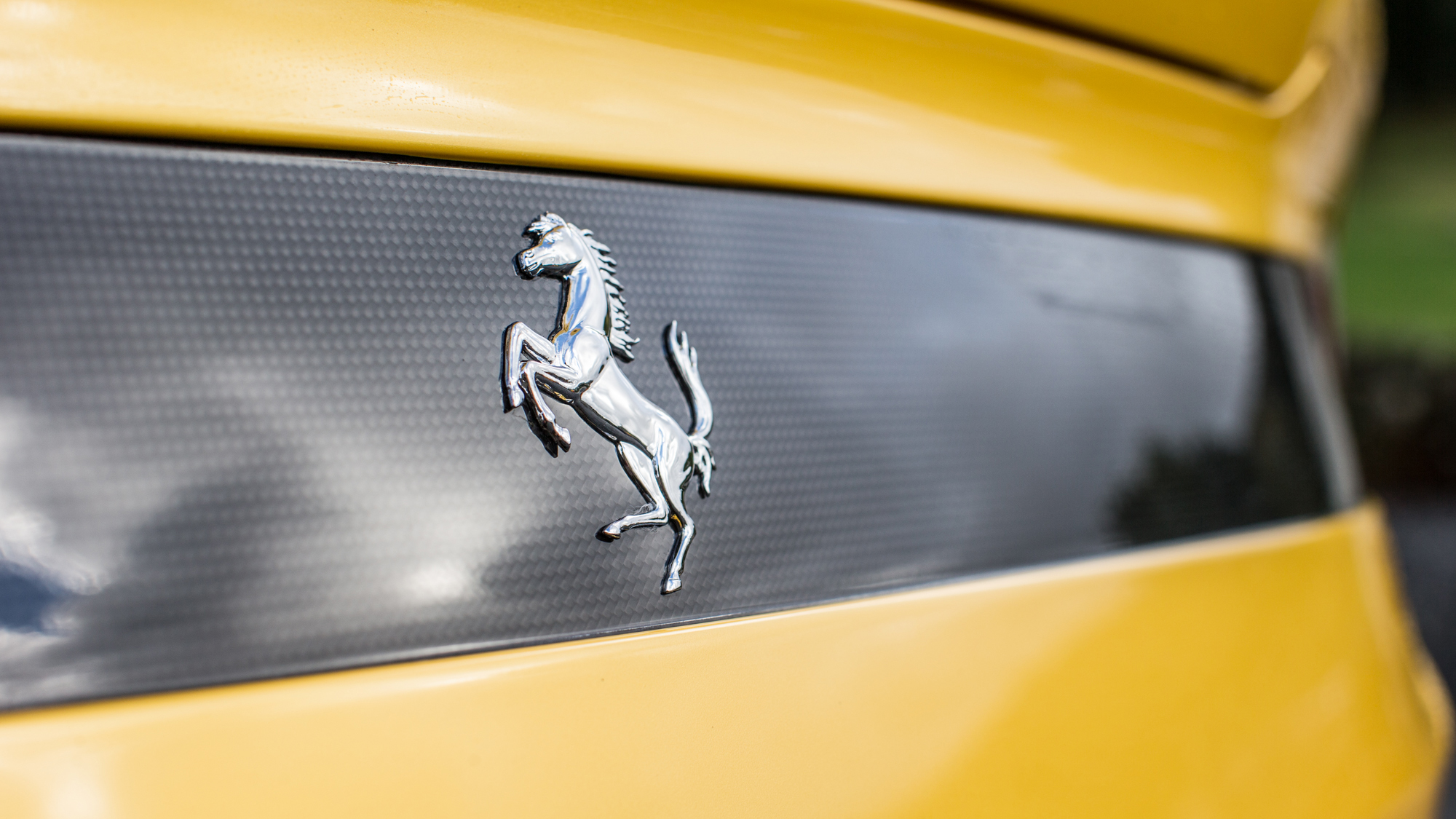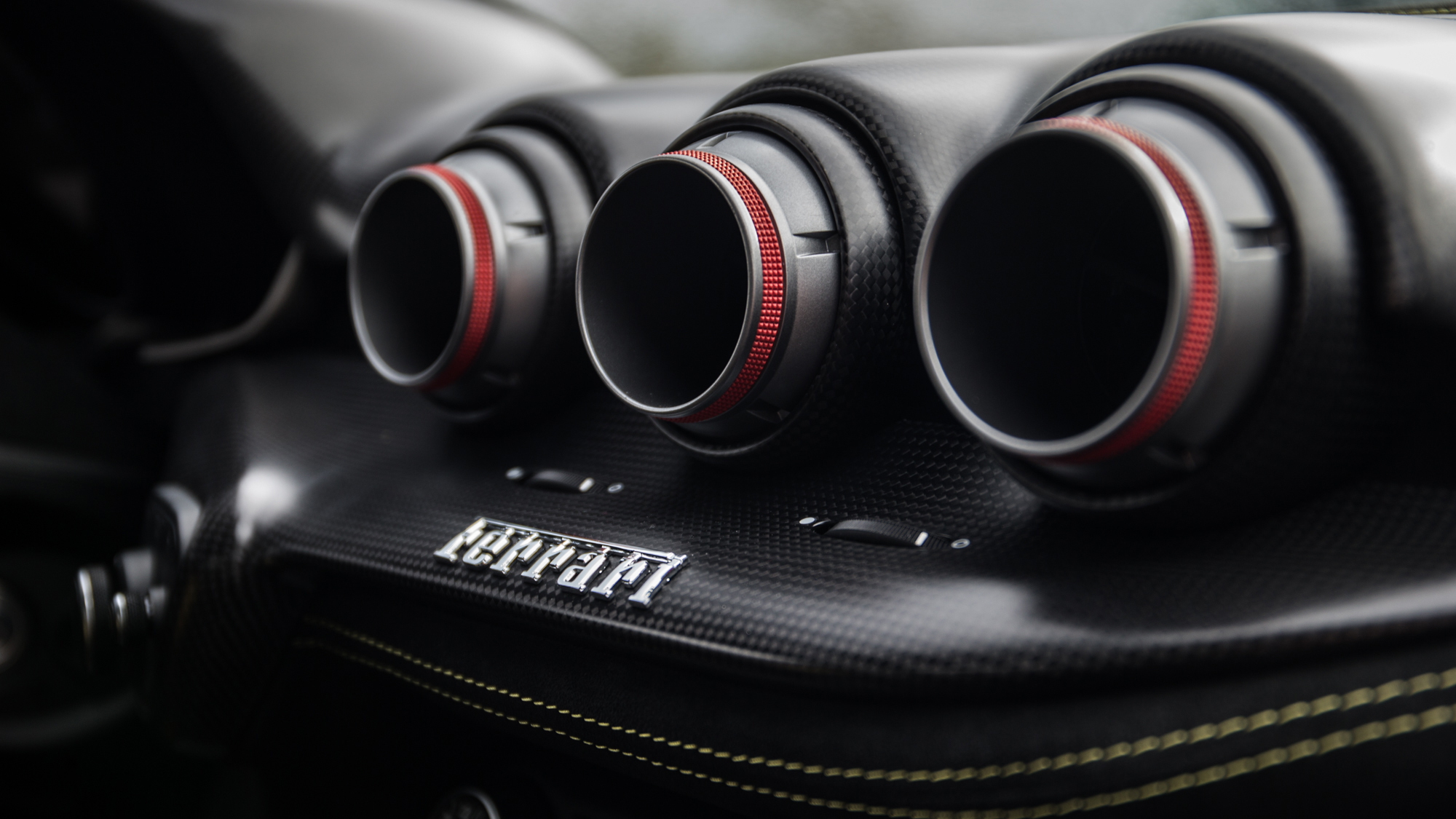
Ferrari F12 tdf review: 770bhp hypercar tested in the UK
The Ferrari F12 tdf isn't brand new, is it?
Nope, we drove it in Italy late last year, which led us to name it the scariest car of the year, and Chris Harris has made two separate video films with it – this one, filmed at Fiorano and another for the last series of the TV show. All the reviews of the F12 tdf agree on one thing though.
Which is?
It’s a spiky, spiteful car to drive. Chris said it was "not so much a car as a Class A substance". And he was on a racetrack with it, where he had run-off and nothing coming the other way.
Me? I’m in Wales. It’s late October. It’s raining. Windy. There are leaves. Sheep. Potholes. Before I drove it I was borderline astonished that Ferrari agreed to let it out at this time of year. Even more troubled when they informed us it couldn’t be taken to a track. This was looking like a good opportunity for me to test my own mortality.
Is the F12 tdf really that hairy to drive?
Well, let’s start with the basics. It’s front-engine, rear-drive, a layout that is usually good for balance and predictability, because it puts the majority of the weight further forward. But not in an F12 tdf, where the engine is so far back it’s basically nudging your knees. And the gearbox is at the back, so the weight distribution is 46:54 in favour of the rear axle.
It’s rear-drive only of course, and the two foot-wide contact patches have to cope with 770bhp and 520lb ft. That’s considerable. Enough to deliver 0-62mph in 2.9secs and 124mph in 7.9secs.
But not in Wales in October. The tdf, as you are already probably well aware, is 30bhp more potent than standard, 110kg lighter, revs to 8900rpm, has six per cent shorter gear ratios that thump through 30 per cent faster and as you can tell from the bodywork, likes to torture any air that comes near it. It wears its aero flicks like knuckledusters. Downforce has more than doubled and there's not a rear wing in sight.
Extra downforce is good for stability, isn’t it?
Top Gear
Newsletter
Thank you for subscribing to our newsletter. Look out for your regular round-up of news, reviews and offers in your inbox.
Get all the latest news, reviews and exclusives, direct to your inbox.
At very high speed, yes. But at Welsh B-road speeds air ain’t doing anything. What is doing all the work are the 275-width front Pirelli P Zero Corsas, which absolutely refuse to lose any grip whatsoever.
That’s got to be good, surely?
Well, a bit of understeer when you get close to the limit is actually reassuring. It shows you’re going quickly and gives you a rough idea of how much harder you can push.
And besides failing to understeer those fat tyres also like to do the camber clamber – under braking they squirrel about and generally make the front end feel very lively and fighty indeed.
Plus, Ferrari loves a super-fast steering rack. Actually the ratio feels about right here – a California is way too darty, but here the sharpness of the rack is at least well matched to the engine, gearbox, brakes, throttle, chassis, back axle etc. Oh and don’t forget VSW...
What’s VSW?
Virtual Short Wheelbase. Ferrari’s new four-wheel-steering system designed to further ‘improve’ (read: sharpen) low speed turn-in. It’s just one of six separate settings managed by the steering-wheel mounted manettino, the others being F1-Trac, E-diff, F1-DC, ESC and SCM.
Ferrari claims the systems are so advanced that they not only make the F12 tdf safer, they make it faster. Switch them off and you’ll go slower, they say. Switch them off and you’ll crash, I say.
So leave them on and what’s the problem? You get great response and there’s a safety net to catch you if it all goes wrong.
You’d think so, wouldn’t you, but driving doesn’t happen in black or white. There’s the grey bit where you’re pushing a bit and don’t want electronic interference. But in the F12tdf that margin is very narrow, because everything is so sharp – things happen in the blink of an eye, so the delay between everything being fine and ‘why am I now looking at the road through the side window’ is a split second.
And because the F12 tdf is designed to give expert drivers a challenge, the stability systems tend to butt out for just enough time for things to get decidedly ‘interesting’. Especially when it’s wet, bumpy, or, to be frank, anything that isn’t smooth, dry, warm and an actual circuit.
So what happens is that you tentatively guide the Ferrari into a sweeping bend, the nose bites hard, and if it bites a fraction too hard, too quickly, the rear snaps at you. With 770bhp doing the snapping, this isn’t ideal. The F12 tdf feels downright spiteful initially, almost to the point of actively trying to self-harm. Throw in bumps, cambers, the usual detritus of an autumnal British B-road and a car anxious to react to everything it comes acros,s and progress in the tdf isn’t exactly relaxing.
Is there a solution?
Well, you quickly appreciate that this particular leopard isn’t going to change its spots, so it needs to be you who adapts. You do this by slowing down and getting the technique right.
The F12 tdf is all about inputs. I thought I’d realised this already and had tried to be smooth and precise. But I hadn’t realised how gentle you have to be, nor how small the inputs need to be. Think not in centimetres, but millimetres, of pedal travel. Not hours on a clock face for the steering, but degrees of a compass.
And each input needs to synchronise perfectly with the others. Not once do I ever just ‘bung it in’ to a corner, not once do I ever mash the pedal to the bulkhead. Because if you try to drive like that, the F12tdf will spit you off. It’s a knife edge.
So you carefully apportion these tiny movements, these incremental percentages, sweating over every millimetre of travel, agonising about every degree of rotation, blending them together, learning how one will affect another. There is no slack in any control. Zero. No delay. Or room for forgiveness.
And each control operates something truly special: the engine, the chassis, even the brakes. It’s enthralling, intimidating and very, very wearing to drive.
Is it a great Ferrari?
On a smooth, dry, warm track, I should imagine its life-affirming, invigorating (and probably still borderline terrifying). On a Welsh B-road, even when you’ve worked out how to drive it properly, it’s exciting in the same way as a near-death experience: each time I park it up giddy with relief that each of us is still in one piece.
I really can’t stress this enough – the tdf is an animal in a way that nothing else is. A GT3 RS is far more stable, a LaFerrari is way more magnanimous and kinder to you and flows with a road. I’m trying to think of other cars that would induce similarly damp palms – an early supercharged Ariel Atom perhaps. It’s memorable alright, but it’s a genuine savage – I think it’s actually a bit much.
In every area? What about the engine?
Whenever people come to look at the car and ask what it’s like, all I do is start that rampant, trumpeting, almighty engine and blip the throttle a couple of times. In two seconds they have all the information they need, a whap, whap, whap of fury as the needle flicks to 8000 and back in the blink of an eye. It speaks volumes for the engineering, the aggression and power contained within.
Taken in isolation, the naturally aspirated 6.2-litre V12 and seven-speed double clutch gearbox could lay claim to being about the best powertrain that man has yet devised. The response to paddle pull or ankle flex is instant and the amount of torque and the way the acceleration ramps in at 2000rpm is just astonishing. It must be awe-inspiring when flat out at the top end.
You don’t know?
How the hell was I meant to? I want to, just to hear it shriek, but no sane gear is capable of simultaneously delivering the noise and keeping the back tyres in check. Not in Wales in October.
Don’t get me wrong, I’m enjoying the challenge the F12 tdf presents, and there are plenty of remarkable aspects to its performance: body control is astonishing, brake bite, feel and power is gob-smacking, the ride is remarkably dexterous (up to a point), and although you can sense the electronics at work, guiding your path, the traction light rarely flickers.
And that’s the thing. We’re all convinced that electronic systems are fun sponges. The F12 tdf shows us there’s another way. For two minutes I turned the manettino all the way to ESC off. The dashboard glowed a dull, sullen red as F1-Trac, E-diff, F1-DC, ESC, 4WS and SCM all wound themselves up.
Of course I went slower – in this instance not because the car’s electronics make it faster, but because I was terrified, which gave me the jitters, which made my inputs jerky, with predictable results. However, for what it’s worth, my cojones must be massive because I’ve driven an F12 tdf on a wet Welsh B-road with the traction off. No need to point out I was outrun by the sheep.
Featured





